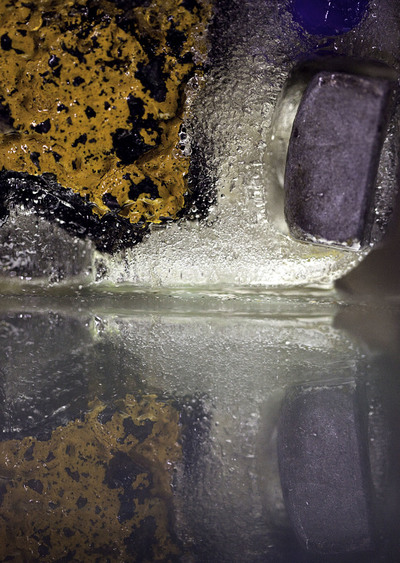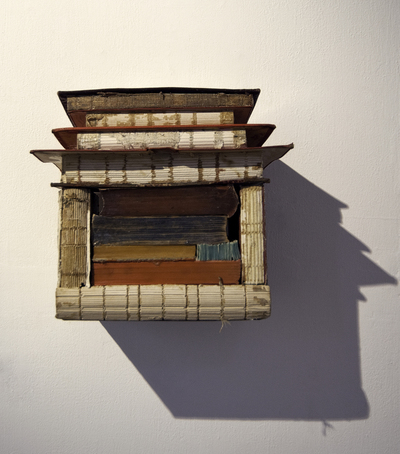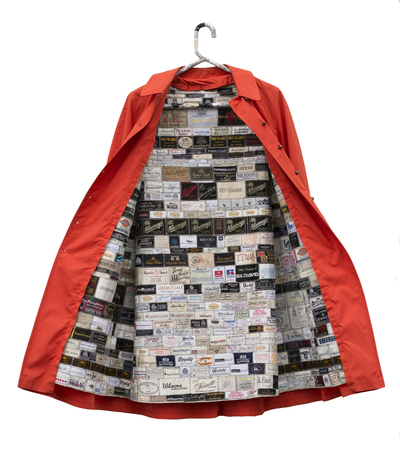Time Matters: A Conversation with the Artists

Installation view, Time Matters, 2016, The Cultural Center of Rocky Neck. Photo courtesy Kathleen Archer.
By Olivia J. Kiers
Time Matters: Three Explorations is a group show featuring North Shore artists Kathleen Gerdon Archer, Conny Goelz-Schmitt and Michèle Fandel Bonner at the Rocky Neck Cultural Center in Gloucester, MA (through July 4). Art New England spoke with the artists to learn how they constructed their show and how collaboration has impacted their individual art-making.
ANE: How did you meet, and when did you decide to exhibit together?
KGA: The Boston Arts and Business Council had a program called the “Artist’s Professional Toolbox” that they ran through Montserrat College of Art. That was in 2012/13. We were in a peer group together and found that we shared the same sensibility in art. We kept meeting even after the program was over, then decided to try and have a show.

Kathleen Gerdon Archer, Next Fell The Stars. Photograph.
ANE: How did Time Matters develop? What brought you to the subject of time?
CGS: We all knew that it would be about time. We all use aged materials, a big subject for us. We try to retrieve our memories with it, I think.
KGA: It’s interesting to see how three people can work together so well and have a show that comes together with three completely different mindsets and approaches to work. Conny speaks about time through the end pieces of discarded books. She’s very much a formalist talking about the loss of books, yet she takes it much further than that, too. We saw passage of time in my work because all the photos in my series are part of a larger self-portrait that’s based on geology and glaciers. I layer a lot of personal ephemera from my life and freeze it, photographing it as it deteriorates over time, melting and falling apart. Michèle talks about time through collection. So the work comes over time, for her.
CGS: I was a little worried because we do work so differently, and I thought it was possible the art wouldn’t speak well together, but it was like a miracle! I am pretty proud of that show.
MFB: The show felt very fated to happen. It really did pull together in such a concrete way.

Conny Goelz-Schmitt, Book Shrine #17.
ANE: Did you create any new works specifically for Time Matters?
MFB: I did. There are three new pieces from me in the show. One piece in the downstairs gallery, called 31 A Day, is very topical. It’s 31 gloves arranged on a rack; it’s based on a visual that came to me in my studio when the Sandy Hook shooting occurred. I couldn’t stop thinking of children running and losing gloves, and not coming back for them. So, I began gathering lost gloves. The number 31 comes from the statistic of how many gun-related homicides occur per day in the United States.
CGS: I think my work was already done when we started organizing. Last year, I changed from working with X-Acto knives and books to layering paint over collage. That’s my newest work, which is not included in the show.

Michèle Fandel Bonner, Old Coat. Hoarder’s raincoat, clothing labels, linen and cotton fabric.
2015.
ANE: Speaking of new work, has the process of collaborating on Time Matters changed the way in which each of you consider your own work going forward?
KGA: That’s an interesting question. I think that it influences each of us in the best way. It’s wonderful to have the opinion of other artists, to have two, very creative minds suggesting alternative routes to your idea.
CGS: I definitely think my newest work is inspired by Kathy’s. I look at her photographs as painterly. She is very free in her expression, and I am very hard-edged. We went to Italy together two years ago and shared a studio; that really influenced me to let go.
MFB: Comparing my art with Kathy’s and Conny’s, I do realize now that mine has a narrative with it that I have to help people understand. Kathy likes a bit of mystery, but I want to talk about what’s behind everything. That may effect how I show work in the future. I need to have the narrative play a greater part in the presentation.
KGA: One final thought: in terms of collaboration, the Rocky Neck Cultural Center holds great opportunity for artists because so much is volunteer-based. The collaborative aspect has been so enjoyable, since most of the time we’re working on our own, in a vacuum in our studios. It’s wonderful to learn by putting work out together.
